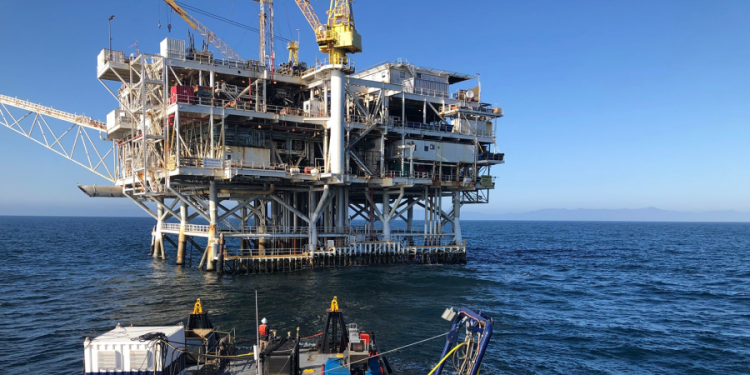Deepwater production in the United States is more profitable than shale projects
In the spring, Chevron began developing oil and natural gas at the Ballymore deepwater field in the Gulf of America. This is just one of a series of projects in a key American oil and gas province aimed at producing an additional 300,000 barrels of oil equivalent per day by 2026. The three wells drilled at Ballymore will bring Chevron up to 75,000 barrels of oil per day.
The recoverable reserves of the field are estimated at 150 million barrels of oil equivalent, located at a water depth of 2 kilometers, approximately 260 kilometers southeast of New Orleans. Connecting the asset to the already developed Blind Faith field infrastructure, which is also operated by Chevron, helped significantly reduce the cost of deepwater development and ensured high profitability at current oil prices. The total cost of the project is estimated at 1.6 billion US dollars.
“Ballymore is an example of how we use technology and increase production efficiency, focusing on affordable and reliable energy supplies from the deepwater Gulf of America. The new project, launched on time and within budget, has provided the company with additional production without building a new standalone offshore platform. This reduces the company’s development costs and is expected to bring high returns to shareholders,” said Brent Gross, Vice President of Chevron Gulf of America.
The leading American oil and gas company remains a major player in the Gulf and continues to actively explore opportunities for growth in the basin of the world’s oldest oil and gas province.
This project became Chevron’s first in the geological formation called Norphlet (Upper Jurassic), where historically the U.S. oil and gas industry has made fewer discoveries compared to other areas of the Gulf. Advances in technology have enabled exploration in new areas. For example, the use of ocean bottom nodes has allowed the company’s geophysicists to collect high-quality data during geological exploration. Chevron’s portfolio includes 370 blocks in the former Gulf of Mexico, and the company plans to participate in the auction scheduled in the Gulf of America by the Trump administration this year.
The U.S. Energy Information Administration (EIA) forecasts oil production on the country’s continental shelf at 1.80 million barrels per day in 2025 and 2026, roughly in line with last year’s level of 1.77 million barrels per day. The Gulf is expected to provide about 13% of U.S. crude oil production and 1% of natural gas production.
Production is expected to begin at 13 new fields in the Gulf of America by the end of 2026. Without the launch of new projects, output could decline. These new projects will add 85,000 barrels per day in 2025 and 308,000 barrels per day in 2026.
One of the largest fields, Whale, began development in January 2025 and will produce approximately 85,000 barrels per day at peak. The Dover field (with peak output of about 15,000 barrels per day) also started development in April of this year, and like Ballymore, the project is tied to the already producing Appomattox field. Production is also expected to start at the fields: Shenandoah, Leon, Castile, Katmai West, Sunspear, Argos Southwest Extension, Zephyrus Phase 1, Silvertip Phase 3, Longclaw, and Monument. As a result, by 2027, oil production in the Gulf may reach 2.4 million barrels per day due to the development of new fields and technological advancements.
According to Wood Mackenzie, 15 years after the Deepwater Horizon disaster, the Gulf of America is once again becoming the main driver of U.S. oil production. Meanwhile, companies working in shale fields are cutting back on exploration and drilling new wells because their breakeven price is close to $62–63 per barrel. In the Gulf, on the deepwater shelf, this figure is $30–40 per barrel. When existing infrastructure is used, operators such as Chevron at Ballymore can reduce this figure to around $20 per barrel. The Bureau of Ocean Energy Management (BOEM)estimates the remaining reserves in the Gulf at 29.59 billion barrels of technically recoverable oil.











